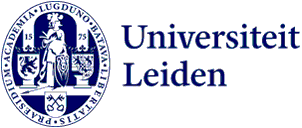455 search results for “genome organization” in the Public website
-
PROTEOMINING: a novel proteomics-based pipeline for drug and enzyme discovery in filamentous actinomycetes
Can a new proteomics workflow be developed to link genes and gene clusters to bioactive molecules, identify novel compounds and enhance the production in the Streptomyces lividans enzyme?
-
Mosaic-Craftsmen and Workshop-organization in the Provinces of Arabia and Palestina during Late-Antiquity
This research focuses on figurative Byzantine mosaic-floors that have been excavated in the geographical area of the ancient provinces of Palestina and Arabia (current Israel, PA and Jordan) dating to the Late 5th, 6th and early 7th centuries C.E.
-
"Getting Organized"
In January 2014, the research project The Promise of Organization hosted a fruitful three-day conference:
-
Reedijk Symposium 2024: Histone HBb: an essential DNA-bending histone in bacteria
Lecture
-
Christian missions and societies in the Middle East: organizations, identities, heritagization (XIXth-XXIth centuries)
The project re-examines the role of the Catholic, Protestant and Orthodox missionaries in the cultural and social developments of the Middle East and their interactions with the indigenous communities, from the nineteenth century until today. It seeks to discover and retrace such ‘entangled histories’…
-
CRISPR Cas-induced targeted mutagenesis with Agrobacterium mediated protein delivery
The RNA guided endonuclease based on the CRISPR/Cas system of Streptococcus pyogenus is a potent new tool for genome engineering in plants.
-
Cell Wall Dynamics in Aspergillus niger
This functional genomics project aims at understanding the biology of the underlying mycelium differentiation and autolysis processes in much more detail.
-
European Council and the European Commission in the policy domain of organized crime
The European Council and the European Commission have a similar role in agenda setting. Both place issues on the EU agenda. However, these institutions have distinct designs. They have different political attributes (the European Council has considerably more political authority) and information-processing…
-
Understanding plant transgenesis
How is Pol θ responsible for T-DNA integration, and how do other DNA double-strand break repair pathways interact with Pol θ? How may we manipulate T-DNA integration to stimulate error-free integration at a predetermined genomic site?
-
Solvent tolerance mechanisms in Pseudomonas putida
Bacterial biocatalysis constitutes a sustainable alternative for high-value chemicals production by enabling the utilization of renewable feedstocks.
-
Macromolecular Biochemistry
Macromolecular Biochemistry is a section of the Leiden Institute of Chemistry at Leiden University, comprising the PIs Marcellus Ubbink, Remus Dame, Aimee Boyle, Lars Jeuken and Anne Wentink.
-
Expertise
The CIGR brings together a diverse range of unique expertise in genome research rooted in biology, chemistry and physics. Members of the CIGR investigate genome folding and genome transactions. An important aspect is direct as well as long term relevance for medicine. The available expertise extends…
-
Flentrop organ in Academy Building turns 25: ‘It’s a whole orchestra’
The organ in the Academy Building is 25 years old. University organist Jan Verschuren and tuner Bert Crama talk about the long history of university organs, improvising with short cortèges and their love for this organ.
-
 Frank Baas
Frank BaasFaculteit Geneeskunde
f.baas@lumc.nl |
-
 Sylvia de Pater
Sylvia de PaterScience
b.s.de.pater@biology.leidenuniv.nl | +31 71 527 4760
-
 Manon de Visser
Manon de VisserScience
m.c.de.visser@biology.leidenuniv.nl | +31 71 527 4882
-
 Oliver Tuazon
Oliver TuazonFaculteit Rechtsgeleerdheid
o.m.tuazon@law.leidenuniv.nl | 071 5278838
-
Evolutionary diversification and historical biogeography of Orchidaceae in Central America with emphasis on Costa Rica and Panama
In this thesis, I targeted the orchid genus Lepanthes, one of the six genera of angiosperms that surpasses 1,000 species in the Neotropics, as a study model to investigate the evolutionary processes that promoted species diversifications.
-
Sculpting the genome and beyond
PhD defence
-
'The Love for International Organizations'
A conference organized by Niels Blokker, professor of International Institutional Law and Ramses Wessel (RUG) to celebrate the 20th anniversary of the International Organizations Law Review.
-
 Elmer Maurits
Elmer MauritsScience
e.maurits@lic.leidenuniv.nl | +31 71 527 2727
-
 Willie Peijnenburg
Willie PeijnenburgScience
peijnenburg@cml.leidenuniv.nl | 071 5272727
-
 Tessa Hagens
Tessa HagensScience
t.m.s.hagens@lacdr.leidenuniv.nl | +31 71 527 5919
-
'Q-wires': Synthesis, electrochemical properties and their application in electro-enzymology
An objective of this research was to achieve direct, well-defined and non-rate-limiting electron transfer between respiratory enzymes and the electrode surface by means of 'Q-wires'.
-
 Maurijn van der Zee
Maurijn van der ZeeScience
m.van.der.zee@biology.leidenuniv.nl | +31 71 527 4885
-
Specificity and side-effects of mutagenesis by CRISPR/Cas9 -induced breaks in plants
Do large deletions represent a risk during CRISP/CAS9-mediated genome editing in plants?
-
Expertise
The CMCB brings together a diverse range of unique expertise in microbial cell biology. Members of the CMCB investigate both model and non-model organisms, bacteria and archaea, pathogens and non-pathogens.
-
Versatile SNP genotyping
The SNP genotyping line offers flexible genotyping for small and large projects at affordable price and high quality. The use as SNPs as molecular markers is very versatile and can be used for a wide variety of scientific questions ranging from paternity analysis, conservatuion genetis towards QTL…
-
Host-Microbe Interactions in Plant Sciences
Plant Sciences' contribution to the Host-Microbe Interactions research theme is to dissect how microorganisms and microbiomes interact with the plant host and the insects on those plants, and how these insights may be harnessed to improve plant growth and health, by steering microbiome composition and…
-
Computational, biochemical, and NMR-driven structural studies on histone variant H2A.B
Nature uses a special class of histone proteins, histone variants, to modulate the properties of chromatin at defined genomic locations.
-
Exploring the chemical space of post-translationally modified peptides in Streptomyces with machine learning
The ongoing increase in antimicrobial resistance combined with the low discovery of novel antibiotics is a serious threat to our health care.
-
Dynamic biogeography – Hybrid zone movement
Does a moving hybrid zone leave a genomic footprint?
-
Genetic and environmental factors determining heterogeneity in preservation stress resistance of Aspergillus niger conidia
Fungal food spoilage often starts with a contamination with spores. Experimental data strongly indicate the existence of subpopulations of spores with different levels of resistance to preservation methods.
-
Functional study of the human genome
PhD defence
-
 Sebastian Pomplun
Sebastian PomplunScience
s.j.pomplun@lacdr.leidenuniv.nl | +31 71 527 4651
-
Research
Research at the Macromolecular Biochemistry group is comprised of the following research themes:
-
From urban food organizations to food policies
Comparing gazes between Turin and other cities in the global north.
-
Difference in microbiota between organic and conventional dairy farms
Bacteria and fungi on organic dairy farms are significantly different from those on conventional farms. That was discovered by postdoc researcher Sofia Gomes and her supervisors Nadia Soudzilovskaia and Peter van Bodegom in collaboration with the Louis Bolk Institute and Naturalis Biodiversity Centre.…
-
Researchers publish book on public organizations
Researchers Wim van Noort, Sandra Groeneveld, Marieke van der Hoek, Jelmer Schalk en Joris van der Voet published a book on public organizations.
-
Key publications
Key research articles and book chapters of the Chromatin group.
-
Plant Sciences
The mission of the Plant Science research programme is to contribute to the sustainable production of high quality crops, flowers and high-value bio-based products. This is realised by generating fundamental knowledge of basic biological processes related to development of plants and their interaction…
-
Horizontal gene transfer and spreading of biosynthetic gene clusters and antimicrobial resistance
Biosynthetic gene clusters (BGCs) for natural products are widespread in microbial genomes, and they are rapidly exchanged. This research assesses the factors that control the spread of BGCs and resistance genes in nature. This includes risk assessment for the spread of engineered DNA in nature.
-
Fire use in human evolution: A genetic approach
Are traces of fire use detectable in ancient hominin genomes?
-
Functions of autophagy in the filamentous fungus Aspergillus niger
What are the functions of autophagy in the filamentous fungus Aspergillus niger?
-
Quantitative biology of polar auxin transport and plant development
The availability of complete plant genome sequences together with the ever increasing amount of data on the molecular, cellular and physiological mechanisms of plant development require mathematical and computational models to obtain a complete overview of and generate new insights into the quantitative…
-
In Pursuit of Next-Generation Lipopeptide Antibiotics
Can new variants of daptomycin and the polymyxins be found?
-
Understanding the uptake and internal distribution of metallic nanoparticles in Danio rerio larvae
The aim is to discover where differently shaped metal nanoparticles distributes in Danio rerio, linking the distribution with genomic responses and so come up with a Mode of Action.
-
Exploring Grainyhead-like 2 target genes in breast cancer
The objective of this study was to investigate the expression and function of GRHL2 in different breast cancer subtypes.
-
Gene regulation in embryonic development
The human body consists of hundreds, perhaps thousands of different types of cells, each with different morphologies and functions, despite having the same genome.
-
A community effort to assess and improve drug sensitivity prediction algorithms
Source: Nature Biotechnology, Volume 2014, Issue June (2014)
